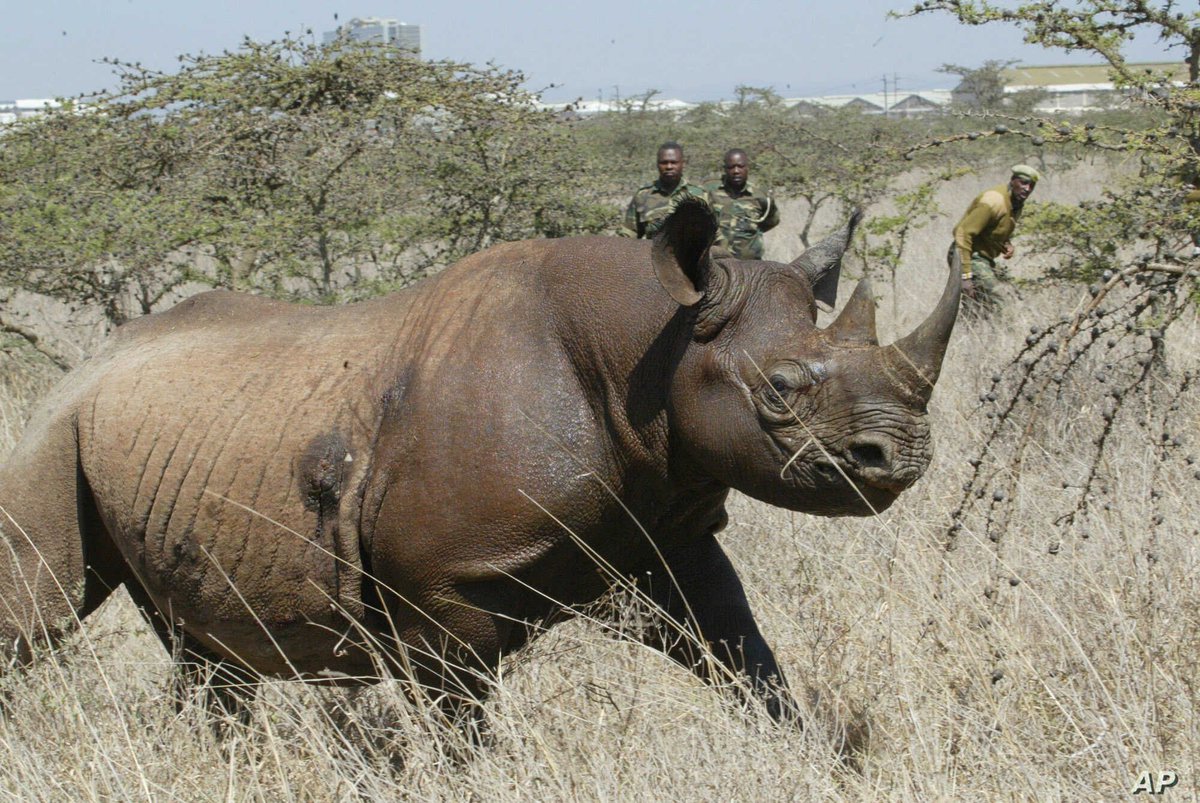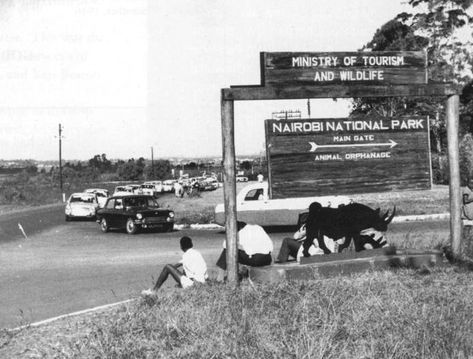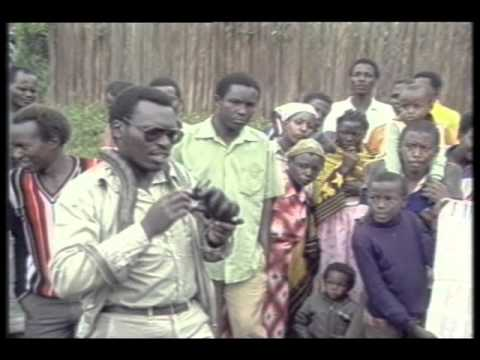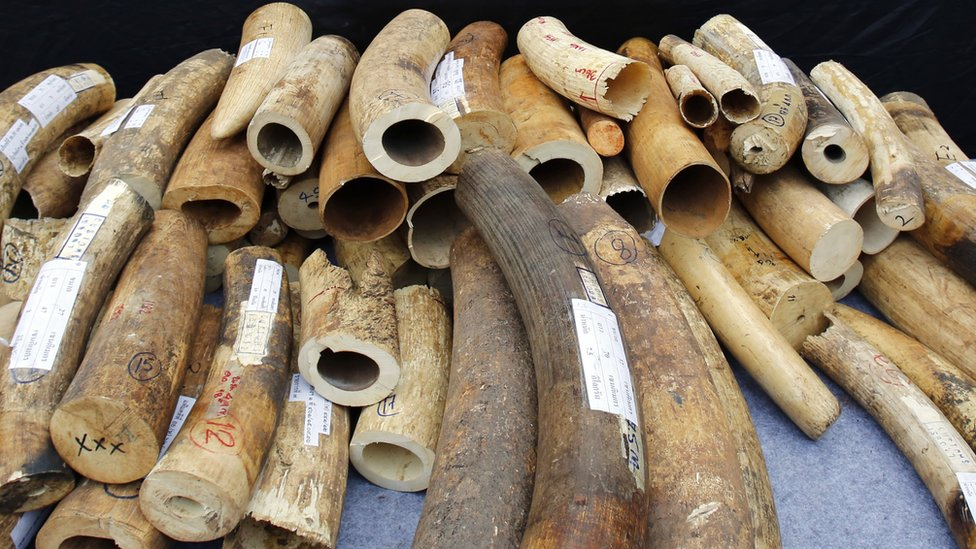On December 27, 1982, Michael Sampson Werikhe began a 27-day walk from Mombasa to Nairobi to raise awareness on the plight of the black rhino.
1/
Mr Werikhe was a conservationist who had gotten concerned about the imminent extinction of the black rhino.
----A Hero Thread----
1/
Mr Werikhe was a conservationist who had gotten concerned about the imminent extinction of the black rhino.
----A Hero Thread----
2/
The number of black rhinos in Kenya had plummeted from 20,000 in 1970 to just about 350 in 1983 as large scale poaching grew rampant in the 1970s.
That number now stands at 760 as of 2020.
https://phys.org/news/2018-08-rhinos-kenya.html
The number of black rhinos in Kenya had plummeted from 20,000 in 1970 to just about 350 in 1983 as large scale poaching grew rampant in the 1970s.
That number now stands at 760 as of 2020.
https://phys.org/news/2018-08-rhinos-kenya.html
3/
The Game Department, the predecessor to today's KWS, was even said to be involved in the slaughter
"In 1973 and 1974, the Game Department expended heavy ammunition at such a rate that it was forced to scour the Nairobi gunsmiths for fresh supplies.”
https://www.nytimes.com/1975/09/22/archives/elephants-are-declining-rapidly-in-africa-african-elephants.html
The Game Department, the predecessor to today's KWS, was even said to be involved in the slaughter
"In 1973 and 1974, the Game Department expended heavy ammunition at such a rate that it was forced to scour the Nairobi gunsmiths for fresh supplies.”
https://www.nytimes.com/1975/09/22/archives/elephants-are-declining-rapidly-in-africa-african-elephants.html
4/
In March 1985, Werikhe, now known as the "Rhino Man" walked over 2,000 kilometres from Kampala to Dar es Salaam, and eventually Mombasa, where he arrived on May 25, 1985
In March 1985, Werikhe, now known as the "Rhino Man" walked over 2,000 kilometres from Kampala to Dar es Salaam, and eventually Mombasa, where he arrived on May 25, 1985
5/
In 1988, Werikhe took his "Save the Rhino" campaign through several countries in Europe, including Italy, Switzerland and Germany. His 3000-kilometre walk ended at the entrance stairs to the Natural History Museum in London on September 14, 1988.
In 1988, Werikhe took his "Save the Rhino" campaign through several countries in Europe, including Italy, Switzerland and Germany. His 3000-kilometre walk ended at the entrance stairs to the Natural History Museum in London on September 14, 1988.
7/
A security supervisor with Associated Vehicle Assemblers (AVA) in Mombasa, Werikhe became a world renowned conservationist.
He raised over US$1 million for rhino conservation in sponsored walks from 1982 t0 1993 covering nearly 5,000 kilometres.
http://www.rhinoresourcecenter.com/index.php?s=1&act=refs&CODE=note_detail&id=1165246905
A security supervisor with Associated Vehicle Assemblers (AVA) in Mombasa, Werikhe became a world renowned conservationist.
He raised over US$1 million for rhino conservation in sponsored walks from 1982 t0 1993 covering nearly 5,000 kilometres.
http://www.rhinoresourcecenter.com/index.php?s=1&act=refs&CODE=note_detail&id=1165246905
8/
Born in 1956 in Mombasa, Werikhe was raised in Nairobi, attending Hospital Hill Primary School and then St George's High in Mwabaya Nyundo Kaloleni.
Werikhe got concerned while working at the Game Dept's ivory sorting room (before hunting was banned)
http://www.rhinoresourcecenter.com/index.php?s=1&act=refs&CODE=note_detail&id=1165246905
Born in 1956 in Mombasa, Werikhe was raised in Nairobi, attending Hospital Hill Primary School and then St George's High in Mwabaya Nyundo Kaloleni.
Werikhe got concerned while working at the Game Dept's ivory sorting room (before hunting was banned)
http://www.rhinoresourcecenter.com/index.php?s=1&act=refs&CODE=note_detail&id=1165246905
9/
The money Werikhe raised helped the Kenyan government to develop large, fenced, guarded tracts of land where rhinos could breed and survive.
With time, the protection this offered allowed the black rhino population to begin rising again.
The money Werikhe raised helped the Kenyan government to develop large, fenced, guarded tracts of land where rhinos could breed and survive.
With time, the protection this offered allowed the black rhino population to begin rising again.
10/
In 1990, Werikhe was honored with the Goldman Environmental Prize for his efforts to save the black rhino.
In 1999, he was post-humously awarded the African of the Millennium" award by the BBC.
The Eddie Bauer Institute named him among its ‘Heroes of the Earth.’
In 1990, Werikhe was honored with the Goldman Environmental Prize for his efforts to save the black rhino.
In 1999, he was post-humously awarded the African of the Millennium" award by the BBC.
The Eddie Bauer Institute named him among its ‘Heroes of the Earth.’
11/
The Rhino Man died a widower at 43 on Sunday, August 8, 1999 at a hospital in Mombasa, as a result of injuries sustained in an assault outside his home in Majengo Sega three weeks earlier.
The exact cause of death is not on record
He left behind daughters Acacia and Kora.
The Rhino Man died a widower at 43 on Sunday, August 8, 1999 at a hospital in Mombasa, as a result of injuries sustained in an assault outside his home in Majengo Sega three weeks earlier.
The exact cause of death is not on record
He left behind daughters Acacia and Kora.
12/
Coastweek eulogised him thus:
"He wasn’t rich.
He wasn’t powerful.
He wasn’t a sporting superstar.
He wasn’t a great scientist or writer or artist.
He didn’t invent anything.
He was just an ordinary man.
From an ordinary home.
Doing an ordinary job.”
Coastweek eulogised him thus:
"He wasn’t rich.
He wasn’t powerful.
He wasn’t a sporting superstar.
He wasn’t a great scientist or writer or artist.
He didn’t invent anything.
He was just an ordinary man.
From an ordinary home.
Doing an ordinary job.”
13/
At the beginning of the 20th century, 500,000 rhinos roamed Africa and Asia. By 1970, rhino numbers dropped to 70,000, and today, as few as 29,000 rhinos remain in the wild.
They would all be gone were it not for courageous heroes like Michael Sampson Werikhe.
At the beginning of the 20th century, 500,000 rhinos roamed Africa and Asia. By 1970, rhino numbers dropped to 70,000, and today, as few as 29,000 rhinos remain in the wild.
They would all be gone were it not for courageous heroes like Michael Sampson Werikhe.
14/
Just FYI, the Kansas City Zoo has a rhino named Werikhe
-Born on 21 Oct 1991 in Saint Louis to Betsy and Toto
-Moved to Oklahoma on 9 Nov 1993.
-Moved to Kansas City on 10 May 2012
Just FYI, the Kansas City Zoo has a rhino named Werikhe
-Born on 21 Oct 1991 in Saint Louis to Betsy and Toto
-Moved to Oklahoma on 9 Nov 1993.
-Moved to Kansas City on 10 May 2012
15/
And here's a video of Michael Werikhe delivering his Goldman Environmental Prize acceptance speech in 1990.
"We've got to take care of this earth; it's so precious," he appealed.
And here's a video of Michael Werikhe delivering his Goldman Environmental Prize acceptance speech in 1990.
"We've got to take care of this earth; it's so precious," he appealed.

 Read on Twitter
Read on Twitter















